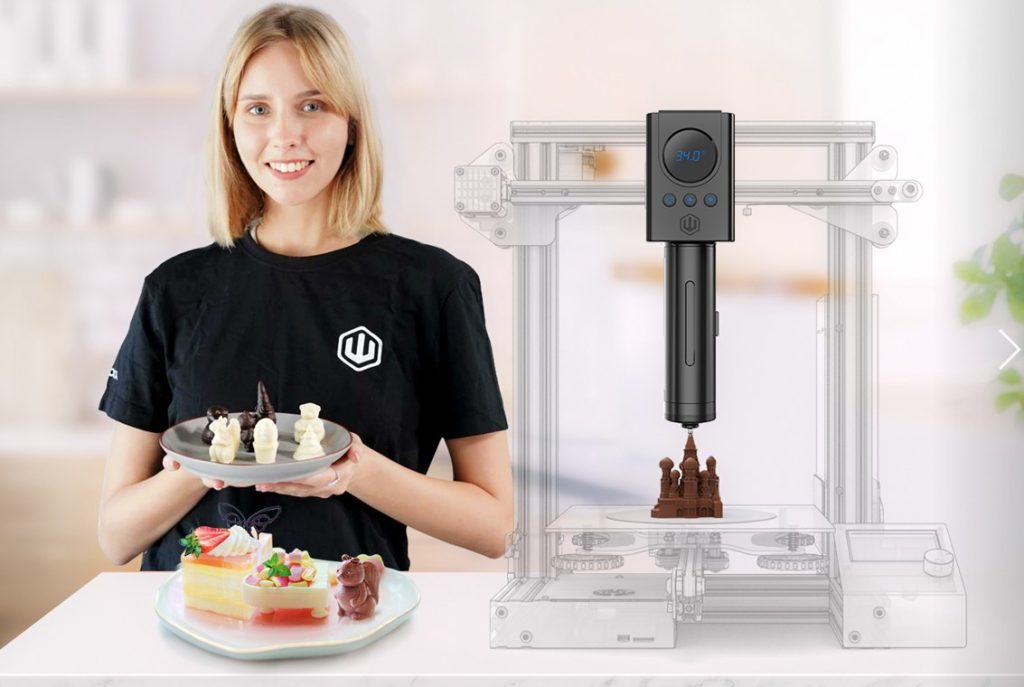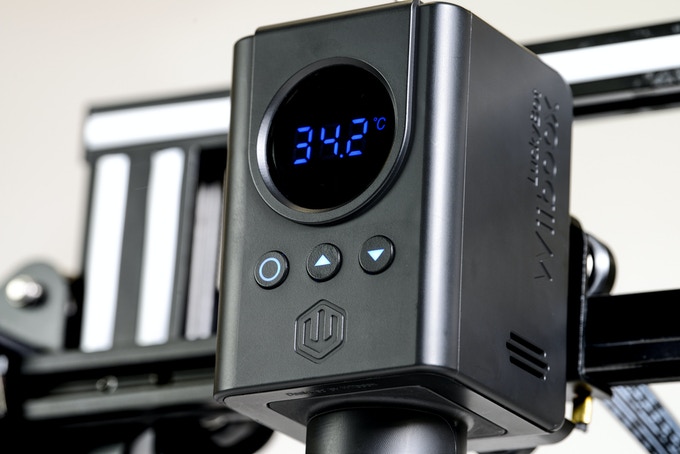China-based 3D printer manufacturer Wiiboox has announced the launch of its new food 3D printing extruder.
Named LuckyBot, the device can be integrated with a wide variety of standard desktop 3D printers to transform them into dedicated food printers. Designed as a cost-effective alternative to the often pricey food printers available today, LuckyBot retails at $159 and is compatible with chocolate, peanut butter, cream, cheese, jam, mashed potatoes, salad dressings, and other soft foods.
Aimed at coffee and dessert businesses, chefs, bakers, or just food enthusiasts, the extruder is capable of fabricating both 2D and 3D custom designs.
Wiiboox wrote in a press release, “Many brands of food printers have gained popularity as a result of the coupling of 3D printing technology with food. However, the purpose-built 3D food printers on the market are too expensive.”

Covering all bases with Wiiboox
Founded in 2014 in Nanjing, Wiiboox sports an impressive portfolio of 3D printing systems covering the consumer, professional, and industrial sectors. With an R&D team and after-sales technical team from the University of Southern California and Zhejiang University, the company serves a long list of customers including the likes of Procter & Gamble, Oracle, and Jaguar.
Wiiboox’s FFF lineup includes the Three-M and W200 3D printers, the first of which has an enclosed build volume of 310 x 310 x 350mm. Additionally, the SLA product line comprises the 3DSL360, 3DSL450, and 3DSL600. These large-format machines offer replaceable resin baskets and are built for professional use.
The firm even offers its own set of industrial metal powder bed fusion 3D printers: the SLM150 and SLM280. The systems support a range of metal powders such as stainless steel 316L, aluminium alloys, titanium alloy, cobalt chromium alloy, and die steel.

The LuckyBot extruder
To use the LuckyBot food extruder, users simply need to remove the existing printhead on their 3D printers and connect the device in its place, which reportedly takes just a few minutes. Featuring a lightweight form factor, the extruder comes equipped with an ABS body, a stainless steel nozzle, and food-ready PP tubing. According to Wiiboox, the assembly is FCC and CE certified.
On the front of the LuckyBot is a temperature display along with three buttons to control the temperature and adjust the position of the lead screw. The hotend is capable of maintaining temperatures of up to 50°C with automated power-off functionality for added device safety. Thanks to the firm’s own integrated temperature control algorithms, the heat in the hotend is always accurate to within 0.5°C.
On the software side, LuckyBot doesn’t have its own print preparation program so it can be used in conjunction with standard FFF 3D printing slicers. As it stands, LuckyBot can be installed on “most FDM printers on the market”, including Creality’s Ender series, Anycubic’s Mega series, and the Voxelab Aquila line of 3D printers.
Despite its relatively small size, the food 3D printing sector is an active one. Just this month, food 3D printing firm Digital Patisserie announced the launch of its new pastry 3D printer, the Patiss3. Reportedly inspired by 3D printing technology developed at MIT, the extrusion-based system is aimed at pastry chefs, restaurants, and industrial biscuit factories, enabling users to fabricate edible freeform shapes at high speeds.
Elsewhere, Natural Machines, a Spain-based developer of food 3D printing technology, recently printed a replica of the world’s best tiramisu. The heart-shaped dessert took first place at last year’s Tiramisù World Cup (TWC), and has now been faithfully recreated using the firm’s proprietary Foodini additive manufacturing system.
Subscribe to the 3D Printing Industry newsletter for the latest news in additive manufacturing. You can also stay connected by following us on Twitter, liking us on Facebook, and tuning into the 3D Printing Industry YouTube Channel.
Looking for a career in additive manufacturing? Visit 3D Printing Jobs for a selection of roles in the industry.
Featured image shows the LuckyBot food 3D printing extruder. Photo via Wiiboox.


